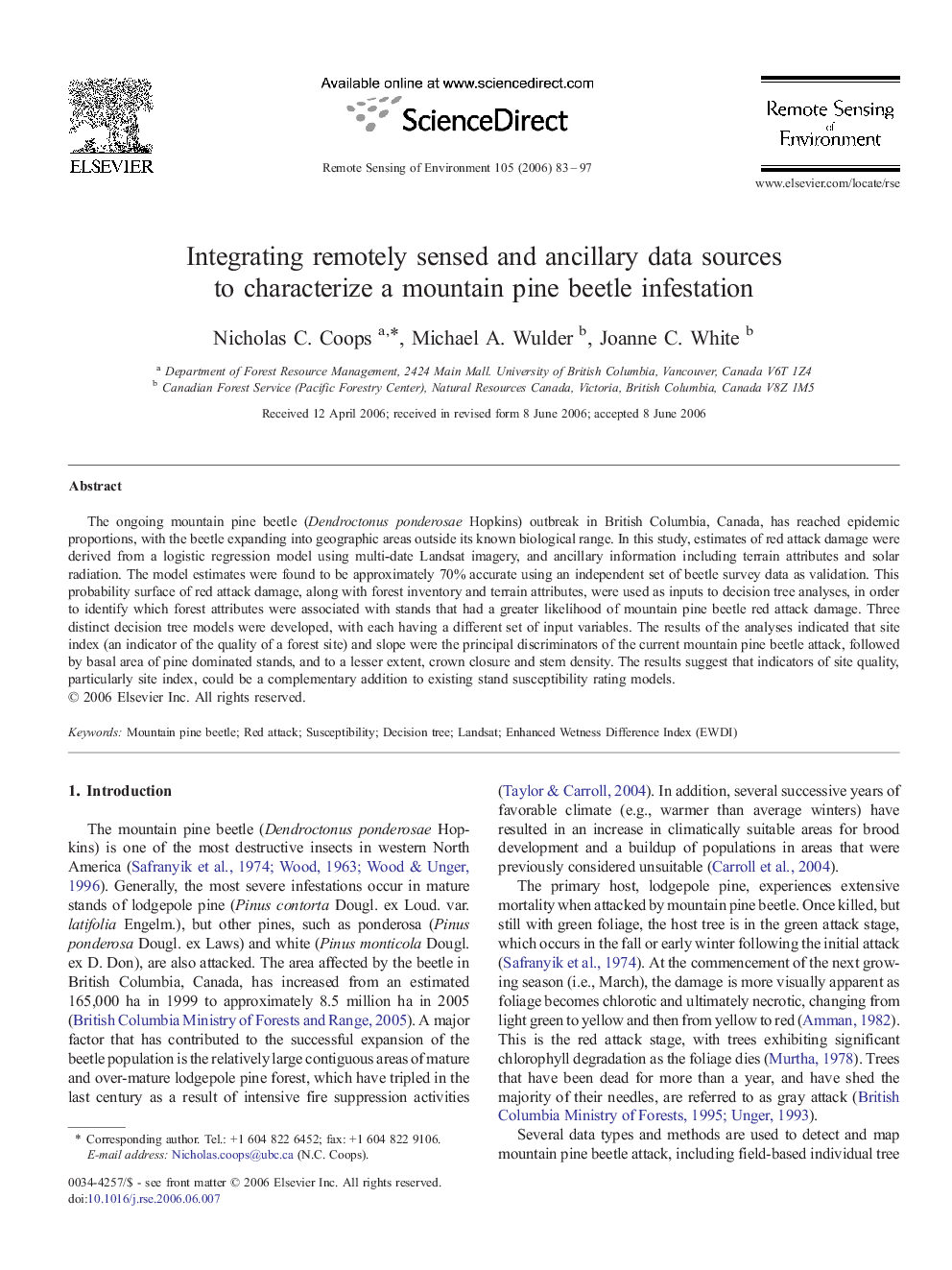| Article ID | Journal | Published Year | Pages | File Type |
|---|---|---|---|---|
| 4461005 | Remote Sensing of Environment | 2006 | 15 Pages |
The ongoing mountain pine beetle (Dendroctonus ponderosae Hopkins) outbreak in British Columbia, Canada, has reached epidemic proportions, with the beetle expanding into geographic areas outside its known biological range. In this study, estimates of red attack damage were derived from a logistic regression model using multi-date Landsat imagery, and ancillary information including terrain attributes and solar radiation. The model estimates were found to be approximately 70% accurate using an independent set of beetle survey data as validation. This probability surface of red attack damage, along with forest inventory and terrain attributes, were used as inputs to decision tree analyses, in order to identify which forest attributes were associated with stands that had a greater likelihood of mountain pine beetle red attack damage. Three distinct decision tree models were developed, with each having a different set of input variables. The results of the analyses indicated that site index (an indicator of the quality of a forest site) and slope were the principal discriminators of the current mountain pine beetle attack, followed by basal area of pine dominated stands, and to a lesser extent, crown closure and stem density. The results suggest that indicators of site quality, particularly site index, could be a complementary addition to existing stand susceptibility rating models.
